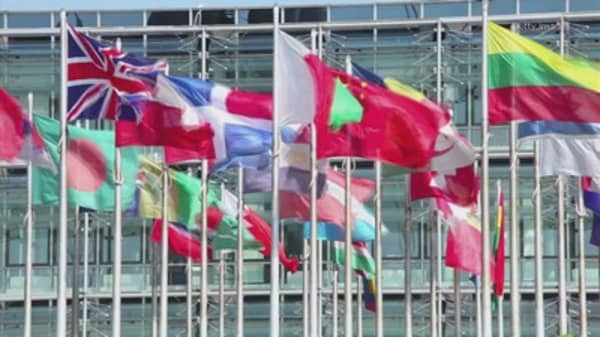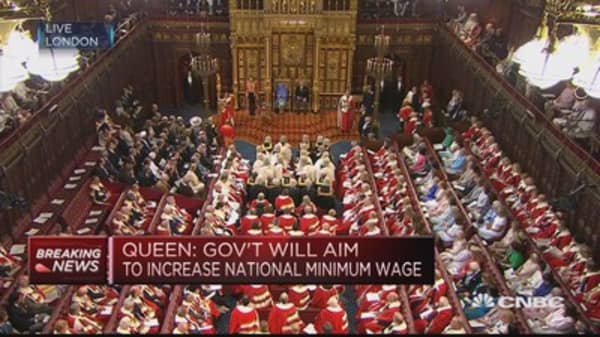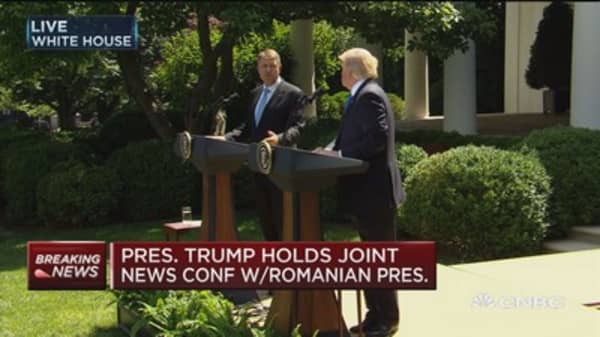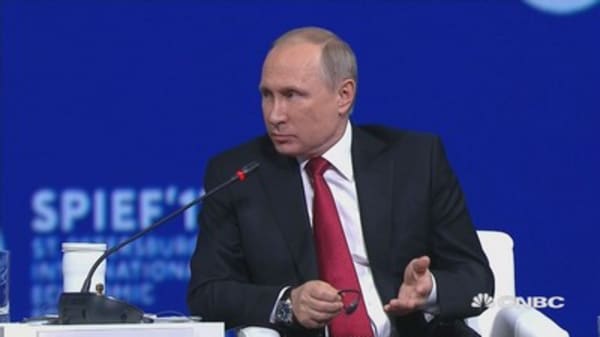Though he declared the alliance "obsolete" as a candidate, President Donald Trump on Thursday affirmed U.S. commitment to the defense of NATO allies.
But he repeated his longstanding lament that the member states rely too heavily on the U.S. military and should continue to boost military spending.
In his second trip to Europe as president, Trump's message was apparently intended to ease the concerns of U.S. allies after failing to endorse the principle of collective defense during his first trip in May.







